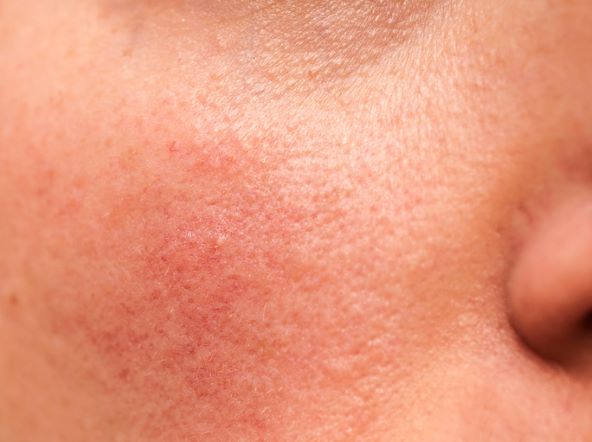What is Rosacea

Affecting an estimated 16 million people in the United States alone, rosacea is an incredibly common skin condition. .It is a chronic skin condition that causes redness and visible blood vessels on the face, particularly in the central region of the face, such as the cheeks, nose, chin, and forehead.
It can also cause small bumps,known and pimples on the skin. Rosacea most commonly affects fair-skinned adults between the ages of 30 and 50, but it can also affect people of all skin tones and ages.
The exact cause of rosacea is unknown, but it is thought to be a result of inflammation of blood vessels in the face. Certain triggers, such as sunlight, hot or cold weather, spicy foods, alcohol, and stress, can exacerbate the condition.
Unlike acne, which it is commonly mistaken for, Rosacea is far more complex and it is important to seek medical advice before treating it yourself.
Treatment Options
The treatment options for rosacea depend on the subtype and the severity of the condition. The most common treatments for rosacea include:
Topical medications
Oral antibiotics
Antibiotics may help reduce inflammation and prevent infections in people with papulopustular rosacea. Other oral medications may be prescribed for people with severe rosacea.
Laser Therapy
Laser therapy can be used to reduce the appearance of visible blood vessels on the face. Laser treatment is a safe way to help clear the redness associated with Rosacea.
There are four main subtypes of Rosacea.
Erythematotelangiectatic Rosacea
This subtype often presents with redness and visible blood vessels on the face. The skin may also be dry and flaky.
Papulopustular Rosacea
This subtype is characterized by redness and the appearance of papules and pustules on the skin, similar to acne.
Phymatous Rosacea
This type typically has thickening of the skin and enlargement of the nose, known as rhinophyma.
Ocular Rosacea
This subtype affects the eyes and is characterized by redness, dryness, and irritation of the eyes.
Symptoms of rosacea
Symptoms will often vary from person to person, and are dependent on the subtype. The most common symptoms of rosacea include:
- Persistent redness on the face, particularly on the cheeks, nose, chin, and forehead.
- Visible blood vessels on the face.
- Flushing or blushing.
- Bumps or pimples on the skin.
- Burning or stinging sensations.
- Dry, rough, or scaly skin.
- Thickening of the skin, particularly on the nose (rhinophyma).
- Irritation or inflammation of the eyes (ocular rosacea).
The symptoms of rosacea can have a significant impact on a person’s quality of life, affecting their self-esteem and confidence. While there is no cure for rosacea, there are several treatment options available to manage the symptoms and prevent the condition from worsening.
Rosacea treatment at The Kimmel Institute
Early diagnosis and treatment can prevent the condition from becoming worse, manage the symptoms, and improve your quality of life. The team at the Kimmel Institute is ready to treat your skin and improve the quality of your life. Call us today to schedule an appointment.
